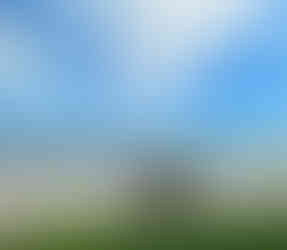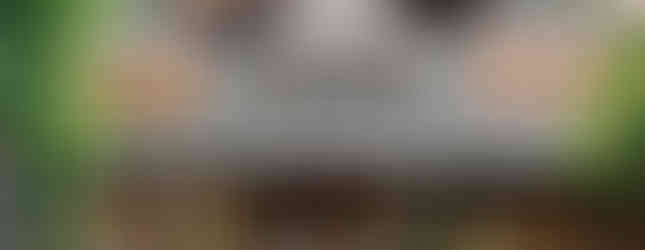Balkan Beauty, Bulgaria!
A hiatus of almost a year! And it was spent moving from India to Bulgaria, settling down in my new home, adjusting to the new country of residence and weather and exploring the country and its neighbours.
So, I have reached the heart of the Balkans - Bulgaria, a name that does not ring bell to most of the larger population. But well, this country proudly flaunts the world-famous Balkan Mountains and Black Sea! This country is the hidden gem of the Balkans, because it is truly hidden from the attention of the world, not so bad in a way.
Bulgaria is almost 64% mountainous and is known for being one of the oldest countries in Europe. In particular, it is the only country that has not changed its name since it was first established.

Part of Balkan mountain range
Bulgaria had introduced the world to the Cyrillic alphabets. The Early Cyrillic alphabet was developed during the 9th century AD at the Preslav Literary School in the First Bulgarian Empire during the reign of Tsar Simeon I the Great. The script is named in honour of Saint Cyril. With the accession of Bulgaria to the European Union on 1 January 2007, Cyrillic became the third official script of the European Union, following the Latin and Greek alphabets.
Bulgaria is a country with stunning natural beauty and a diverse range of landscapes, from the rolling hills of the Balkan Mountains to the sandy beaches of the Black Sea coast. Bulgaria is known for its mountains, flora and fauna, beautiful beaches, ski resorts, mineral springs and historic landmarks. Not to forget Bulgarian rose and rose wine.
This subject can actually become a book but I will keep it short, more like a summary. Let’s start with the capital city, Sofia.
SOFIA
When I think of Sofia, I can’t miss the moment when I landed here. After a comfortable but long journey from India to Doha, then Doha to Sofia, quite a lot of reading and some initial shock of dealing with the magnanimity of Doha airport, I was welcomed by a huge mountain on one side and range of mountains on the other sides. I realised that I was surrounded by mountains! What more could I have asked for! I reached Sofia, the capital city of Bulgaria.

I landed in Sofia, capital of Bulgaria
A small airport, some curious eyes including mine, nervousness of dealing with unfamiliar formalities and OMG managing the luggage alone. After these initial hiccups I stepped out to hug my hubby after two long months. And we set off to a new start.
Sofia is a beautiful city, with an amazing blend of classic and contemporary. The city has its own magical charm. I know it was love at first sight! Beautiful classic architecture in soft alluring colours adorns the centre of the city, predominantly yellow. And yellow being one of my favourites, I almost push myself to move forward at every step, every time.
The city turns gorgeous at night, the outcome of street lights falling on these stunning structures makes strolling through the city centre quite an experience!
The rest of the city is also far from being boring, visually. Rest of Sofia is also built very aesthetically, keeping up with the charm of city centre. Yes, there are remnants of communist era simpler structures but they are few and do not interfere with the visual appeal much.
It can be called a green city with big parks, mini forests inside the city and lots of trees. The city turns yellow and orange during autumn and that’s quite a view!
Beauty of Sofia
Food forms a significant part of the city with many pubs, cafes, restaurants and different kinds of cuisines to explore. We were surprised to find some 7 Indian restaurants here, actually offering delicious Indian food, tasting perfect mostly. The air has happy, cozy and warm vibes, overall.
BALKAN MOUNTAINS
Balkan mountain range as visible from the top of Vitosha mountain
It is believed the name ‘Balkan’ was brought to the region in the 7th century by Bulgars who applied it to the area, as a part of the First Bulgarian Empire. In Bulgarian, the archaic word Balkan was borrowed from Turkic and means "mountain". Eventually the whole region came to be known as the Balkan Peninsula which includes countries like Romania, Moldova, Bulgaria, Greece,, Albania, Serbia, Croatia, Slovenia, North Macedonia, Bosnia and Herzegovina, and Montenegro.
And oh what a grand mountain range it is! A long stretch from west to east, starting from Serbia and ending in eastern Bulgaria's Black sea coast, this mountain range divides the country into two parts, norther Bulgaria and southern Bulgaria. Then there are some smaller mountain ranges around the Balkan mountains like an extension, they are known as sub-Balkan range, our favourite Vitosha mountain is a part of it.
While crossing through the Balkan mountain one can see layers after layer of mountains, big and small. It’s a delight to the eyes. Lush green during summers and infinite white during winters. Not to miss, it is a proud host of many beautiful and cute villages throughout the stretch.
Balkan drives
Balkan mountain villages

Part of the Balkan range visible from a highway
BLACK SEA
The famous Black Sea and its deep dark secrets lying peacefully on the seabed!
The Black Sea is an inland sea, strategically located from 'political reasons' point of view and almost owned by all the countries surrounding it, largely by Turkey and Russia militarily. But why care about politics when we have such a beauty to experience and admire.
The Black Sea is anoxic, meaning there is only a small amount of dissolved oxygen in the water below a depth of 500 feet. This anoxic layer is responsible for the preservation of ancient shipwrecks which have been found in ample numbers on the seabed of the Black Sea. I have heard that the sea holds within itself many stories of the past, wrecks from the bygone era, and even some wrecks that many archaeologists think are connected to Noah’s ark. Of course it is debatable and the debate is still on, I guess. But deep inside the Black sea by the coast of Bulgaria lies an undersea museum, almost!
Yes, the sea is swimmable. :)
Black sea, Nessebar
CLASSIC HERITAGE
It was May and a soft chill filled the air!
Beautiful curvaceous and grand buildings around the heart of the city, beautiful old churches, colourful trams moving in zigzag paths, open air cafes and restaurants at every step and always full of people, greenery and beautiful parks bubbling with life.
The city has something special and unique to admire, which one can find only in Budapest and Vienna other than Sofia, yellow cobblestone path made of Hungarian yellow bricks. It has a history of its own. It adorned the city centre after Bulgaria’s Liberation from the Ottoman Empire in 1878 when Sofia was designated the country’s capital. And I personally love it, the classic heritage buildings of Sofia alongside the yellow cobblestone path creates quite an impression.
SCENIC LANDSCAPE
With 64% of land mountainous and lots of green meadows, with tiny villages strewn in between, Bulgaria is a traveler’s delight, especially for road trip lovers. Lush green view till the eyes could reach, and the same turning white in winter is a regular thing here. And a three sixty degree view of hills and mountains, sometimes it gets difficult to decide where to look, including the rear mirror.
Nature's child, Bulgaria!
Major part of the country constitutes of forests and greenery, with the backdrop of hills and mountains of different sizes. There are some mini forests even in the cities. Add to this the gurgling streams, flowing happily along with us as we drive on the winding roads of Rhodope or Balkan, Rila or Pirin mountains. These little streams also form an important part of villages and towns stretching throughout the country.
LAYERS OF HISTORY
The similarities between India and Bulgaria in this context cannot be ignored. Both the countries have seen layers and layers of history, changing hands of emperors and kings while ordinary people facing the wrath of it and storming through it every time. All of this including the struggle to breathe freely in a free country.
So, in Bulgaria has lived the Thracians, the Persians, the Bulgars, the Greeks, the Romans, the Byzantines and the Turks during some time in the history of the country. Bulgars, Thracians and Slavs form the three ethnic ancestors of modern Bulgarians. It is quite intriguing to know that in some cities, like Nesebar, layers of civilisation have actually been found underneath. The famous Spartacus also has roots to Bulgaria, but interestingly, his Bulgarian origin may be somewhat ignored or has remained unknown by the world.
ROMAN RUINS
Bulgaria is one of the oldest countries of Europe. With its cultural and historical heritage dating back 8000 years, Plovdiv, a city in Bulgaria, is considered to be the oldest continuously inhabited city in Europe and one of the oldest in the world. Both Sofia and Plovdiv flaunt some intriguing ruins of the Roman era, Plovdiv is a winner here though. Both these cities are charming in their own way, but for many Plovdiv gets some extra points. I cannot disagree though I feel we cannot much compare the two cities, nevertheless Plovdiv’s city centre is a world of its own, which is visibly missing in Sofia.
Ruins of Roman empire found in Plovdiv and Sofia (Serdika as it was known then)
(click on the side bar to enlarge each image)
Coming back to the Roman ruins, we have remnants of an amphitheatre in Plovdiv along with many other structures and almost a small housing locality of the past under the metro station of Serdika. The way these pages of history have been preserved is appreciable. Regarding Plovdiv, the story goes like this. There was some digging going on for some commercial purpose when the team started discovering ancient ruins. Soon it became a centre of attention for archaeologists. The more they dug the more they unravelled a vanished Roman city. And it went on and on when the city administrators finally decided to stop the gigging else whole of Plovdiv would have been dug up!
MONASTERIES & CHURCHES
A very unique religious entity in the Balkan region is the presence of beautiful monasteries, always in the middle of mountains and forests, amidst the serenity of Nature. It was kind of a discovery for me because from my past knowledge I have always associated monasteries with Buddhism but did not know that Orthodox Christianity, which is the main religion of the Balkan countries, also associates itself with monasteries. The rise of Orthodox Christianity in Bulgaria dates back to the Byzantine empire. The key differentiating point is that people worship multiple religious saints who have contributed greatly to the society in many ways.
There are quite many churches and monasteries dating back to 13th/14th centuries and even older, well preserved in Bulgaria. When Bulgaria was not yet free, the monasteries played a key role in protecting and preserving their faith and practices. They gave protection and asylum to many revolutionaries during Bulgaria’s struggle for freedom.
The monasteries have great religious significance and they also are proud owners of some real classic masterpieces in form of beautiful, centuries old paintings on the ceilings of these monasteries.
Churches and Monasteries of Bulgaria
The main landmark church of Sofia, St. Alexander Nevsky Cathedral, was built to honor Russian soldiers who died during the Russo-Turkish War of 1877, after which Bulgaria was liberated from Ottoman rule, and was named after Saint Alexander Nevsky, a Russian prince in the early 13th century. It is one of the 50 largest Christian church buildings by volume in the world. It is among the 10 largest Eastern Orthodox church buildings. It is the largest cathedral in the Balkans.
There are 211 monasteries in Bulgaria, out of which Rila monastery, Bachkovo monastery, Troyan monastery are the largest and most famous.

Bachkovo monastery has a special historical significance. Patriarch Cyril was buried here. Who was he and what makes him a key figure in the history of the world? Because of him Bulgaria is the only country where the population of Jews increased during the Nazi era (WWII). From 1941 to 1943 Bulgaria was Germany’s ally and was getting ready to deport Jews on the directive of Germany. But Patriarch Cyril, with his courage and grit, stopped it. Many other Bulgarians followed his footsteps and became united about this. The government had to cancel the deportation and some 50000 Jews were saved. His pure conscience saved 50,000 lives.
I feel the whole world should know how the face of courage looks like.
HERITAGE HOMES
This is what I love the most, Bulgarian heritage villages. They have a unique architecture and it is fascinating to observe how well they have preserved them. Most of them lie in the fold of layers and layers of mountains, lush green during summers and snowy white during winters. Many of those villages have become interesting tourist attraction for the citizens of this country as well as foreigners. Some exclusive houses of the elite have been converted to museums, showcasing the culture and lifestyle of people of the bygone era. Visits to these places never ever disappoint, it’s always like a breath of fresh air, and a visual treat. A lot can be learnt about the country from these heritage house museums.
Snippets of Bulgarian heritage homes
(click on the side bar to enlarge each image)
FOUR SEASONS
The country has four vivid seasons. I totally enjoyed following the changing colours of the country, from green to yellow to orange to white to green again (going to be green again soon)!
During summer wherever you look you can find lush green meadows, rolling hillocks to mountains, layer after layer, hills and mountains of different sizes and magnanimity. The view turns white as winter approaches and snowfall starts. The mountainous regions stay that way for quite many months. The cities experience snowfall often with February being the peak winter month. Then comes spring turning everything green again, the colours start appearing. Fall can simply be called gorgeous. Difficult to explain unless you experience it yourself.

Summer hues, Balkan mountains
LIFE AND RELATIONSHIPS
The community life of Bulgaria and the importance given to family and friends is totally admirable. People like to enjoy a lot, the air itself is so much full of energy and happiness that it's almost infectious. Families and group of friends chit chat, eat, drink and celebrate moments. Grandpa holds granny’s hands and takes a stroll in the park. Or a group of very well groomed grannies meet over conversations and whole lot of laughter, food and drinks. Ah how can I miss the pups and doggos running around or stealing our hearts with their lovey dovey eyes, they are everywhere! :)
People are quite outdoorsy and on a warm sunny day the whole of Sofia will be outside, hiking, enjoying outdoor sports, strolling in the park or just soaking some sun. Come summer and the whole country gets ready to celebrate different folklore and cultural festivals. I love the way the country has chosen to preserve its rich heritage and old traditions and enjoys those celebrations with all heart. I got lucky to have experienced one such folklore festival held on the lap of Balkan mountains. Traditional music, folk dance, food, drinks, art bazaar, such festivals have an electrifying environment. Sheer happiness!
Not that the scene is much different on a cold, winter day. Winter sports like skiing or snow hiking or just having fun in snow is a common sight. Evenings are no less lively, with every pub, bar, restaurant, and cafe to be found full house. For a dinner or lunch it is always advisable to reserve a table in advance, we took some time in getting into this habit. :)
TO CONCLUDE
If you are reading this concluding paragraph then I should be highly thankful to you. I had thought I would keep this story short but it is not easy to fit in a whole country in just a few words. This is just a snapshot of what the country is. I know it's a lot of pictures added here but I think I got little carried away in trying to fit almost a whole one year in just one story. You can choose to explore it further on your own. And thanks for your patience.
Many more important aspects of the country have not been included, majorly because I am yet to experience them, for example Rose valley of Bulgaria. Also I have tried to stay as close to facts as possible, based on my limited knowledge about the country. In case you find an issue in factual details anywhere then please feel free to drop a message. I will definitely rectify it.
Also stay tuned for more stories about the Balkan region, other neighbouring countries and India. Enjoy reading!

A hearty breakfast on a sunny morning at Veliko Tarnovo in the Balkan mountain region
Some authentic Bulgarian dishes










































































































